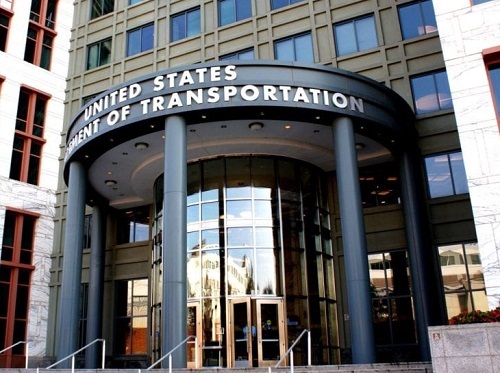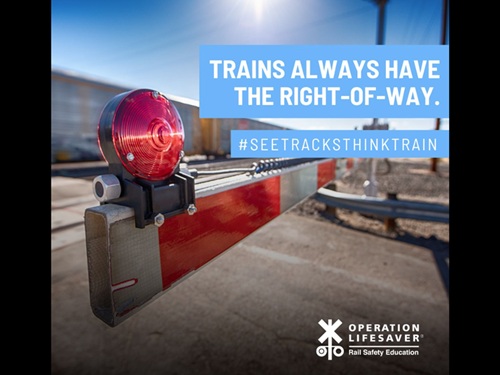The Federal Railroad Administration issued $320.6 million in grants on September 23 to support 50 railroad projects in 29 states via its Consolidated Rail Infrastructure and Safety Improvements or CRISI program.
[Above photo by the FRA.]
The agency noted that nine of those 50 projects funded with this fiscal year 2020 grant money specifically address safety at highway-rail grade crossings and deterrence of illegal trespassing.

Karl Alexy, the FRA’s associate administrator for railroad safety and its chief safety officer, noted in testimony at a House of Representatives Committee on Transportation and Infrastructure hearing in February that trespassing on railroad property and grade crossing incidents together account for 97 percent of all fatalities along the nation’s railroad rights-of-way.
“Over the past 30 years, grade crossing fatalities have decreased by over 60 percent, but it is not enough,” he explained. “FRA believes these accidents, and resulting injuries and fatalities are preventable. Thus improving grade crossing safety and preventing trespassing on railroad rights-of-way are top priorities.”
[The CRISI grant awards also coincided with the industry’s annual Rail Safety Week event, which this year focused on trends in railroad crossing and trespass incidents and how people can stay safe.]
The agency added that the other projects funded by this latest round of CRISI grants focus on expanding, upgrading, or rehabilitating railroad track, switches, yard, and station facilities to increase performance and service delivery.
“We remain committed to helping address pressing transportation capital needs, particularly in rural areas,” emphasized Ronald Batory, FRA’s administrator, in a statement.
The agency noted that rural projects, which have a minimum 25 percent funding requirement under the CRISI Program, received more than 60 percent of the $320.6 million issued for this round of CRISI grants.
Of the 50 projects awarded grants, 32 are located in opportunity zones – areas created to revitalize economically distressed communities using private investments.
 Nation
Nation
USDOT Issues $130M Worth of SMART Program Grants
December 20, 2024 Nation
Nation

